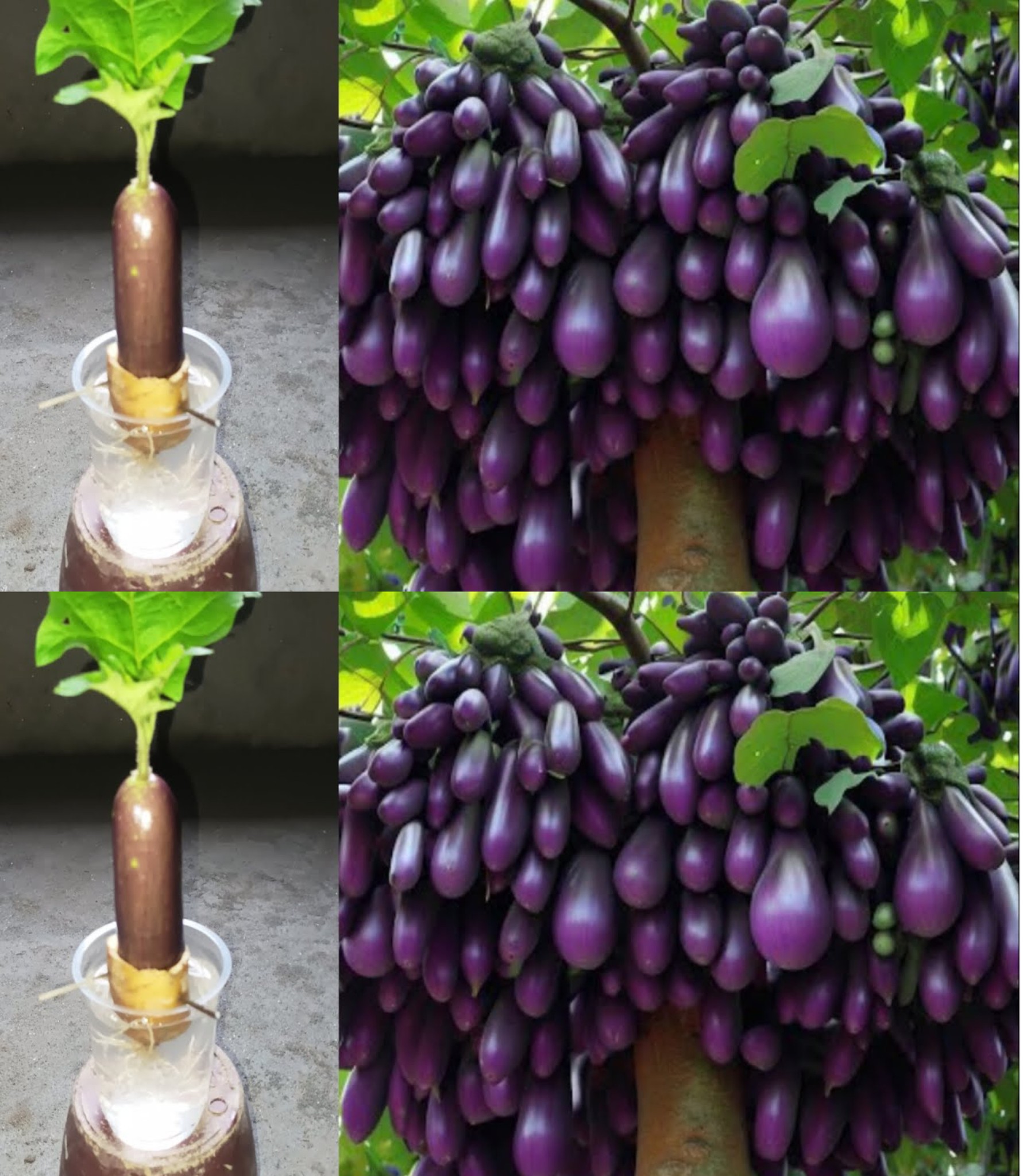
Gardeners in warm regions rejoice! Although difficult to grow in cooler regions, eggplant thrives in warm weather. Learn how to grow eggplant and add this beautiful fruit (yes, eggplant is a fruit) to your garden and table.
Discover below 8 secrets to know for growing eggplants:
1. Choose the best place to grow eggplants
Eggplant will prefer a very sunny location with well-drained soil rich in organic matter.
It’s important to alternate where you plant eggplants and other members of the nightshade family (like potatoes and tomatoes) to help prevent and avoid soil-borne pests and diseases. Wait at least 2 years between planting crops in the nightshade family.
If pests or diseases have been a problem in the past, try growing eggplants in containers instead. Eggplant grows very well when grown in large pots.
2. Choose an eggplant variety suited to your needs
Eggplant varieties differ in size, shape, color and ripening time.
Globe eggplants or American eggplants have large, traditional oval purple or white fruits. They produce better in warmer climates.
Japanese eggplants have long, thin fruits that ripen quickly, making them a good choice for cooler areas.
Small-fruited eggplants (such as Indian and Fairytale) are more compact and are perfect for small spaces or containers.
There are many varieties to have fun with shapes and colors.
3. Start sowing eggplants indoors from seed or purchase grafted plants
Eggplant performs best when planted outdoors from transplants rather than seeds. Start eggplant seeds indoors 6 to 8 weeks before the last spring frost. Seeds germinate in 7 to 14 days. Eggplant seeds last up to 4 years. Eggplant seeds are available on many sites on the internet.
Because eggplant is sensitive to transplant shock, start seeds in larger 3-inch containers and harden off the plants before planting them in the garden.
4. Plant eggplants at the right time
Eggplant prefers warm weather, so don’t plant it until temperatures have warmed in spring. Transplant eggplant seedlings into the garden when the soil is at least 21°C (the best way to check your soil temperature is with a soil thermometer), with daytime temperatures at or above 21°C and nighttime temperatures above 10°C.
Space plants 45 to 60 cm apart.
5. Take care of plants throughout the season
Give eggplants a steady supply of moisture, but don’t let the soil become soggy. If the eggplant is not watered enough, the fruit will be small and bitter.
Eggplant also needs food to produce well. Feed the plant at least once a month with fish emulsion or compost tea.
Eggplant is self-fertile but benefits greatly from pollination by bees.
Remove faded leaves and plant stakes or trellises as needed if you see the plant curling.
6. Be on the lookout for pests
Flea beetles, aphids and potato beetles are common eggplant pests. Use row covers to deter them until the plants are large enough to handle some damage. If the pests are persistent, leave the row covers during the harvest period.
7. Harvest eggplants at the right time
Smaller fruits taste the best and frequent harvesting encourages greater production. Eggplant stems are brittle so be careful. To harvest, cut the fruit with a stem still attached to it. Some tips to know if the fruit is ready to be harvested, if it is ripe, not ripe enough or too ripe!
– If no thumbprint is visible when you press it, the fruit is not ripe.
– If the thumbprint disappears after pressing, the skin is bright and shiny, and the fruit is firm and heavy for the size, then the fruit is ripe. THE fruit will be tender, with a better taste and small seeds.
– If the thumbprint remains after pressing on it and the skin is dull, then the fruit is overripe. The fruit will be more bitter, with large seeds and too hard skin.
8. Don’t let eggplant crops go to waste
Eggplant does not freeze well or does not freeze well. It is best to use eggplant within a day or two after harvest. Do not store eggplants in the refrigerator, but in a cool, humid and well-ventilated place.
Naturally low in calories but high in fiber, eggplant can be grilled, fried, breaded, roasted, baked or sautéed. Eggplant is also a great meat substitute and an essential part of Italian cuisine. There are several dishes where eggplant is featured. Try adding this versatile fruit to your favorite recipes or adding it to omelets or as a topping for pizza.